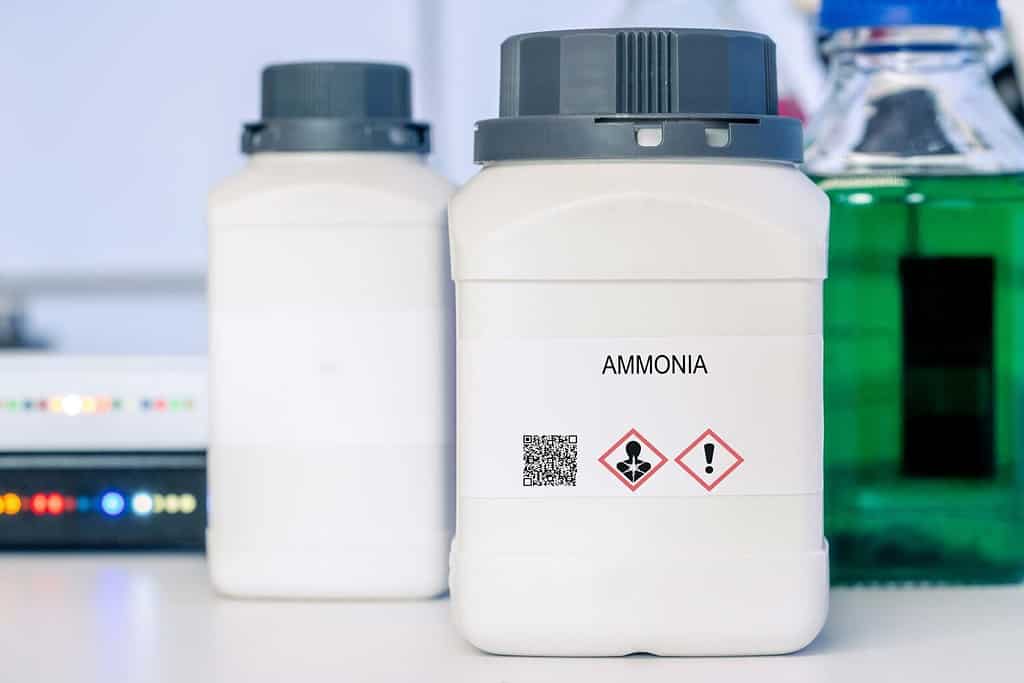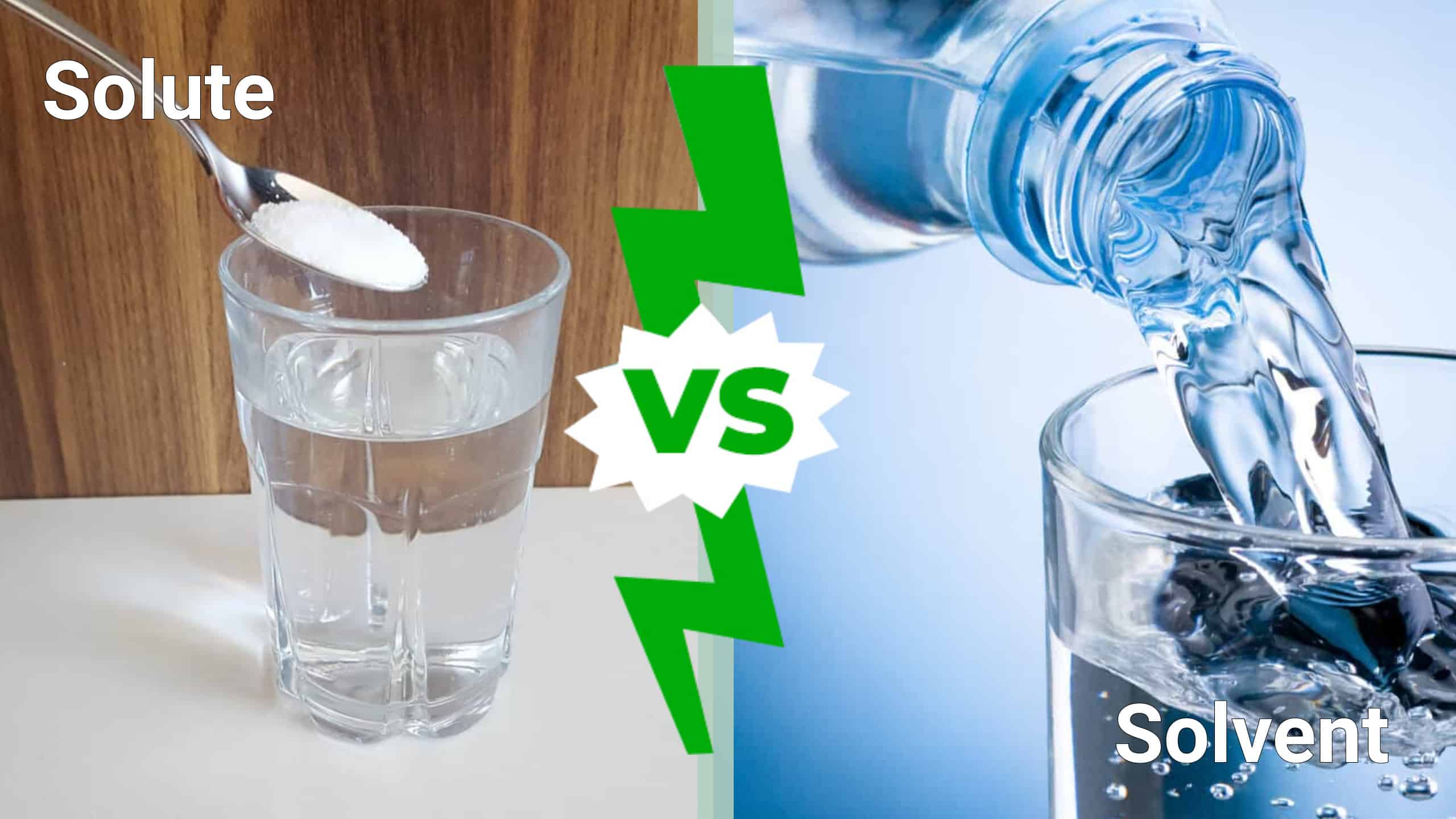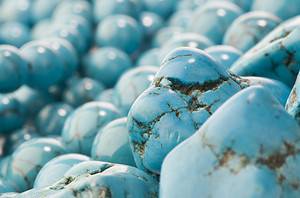Solutes vs Solvents: What is a Solute?
A solute is an atom, molecule, or particle, a substance, that is distributed in a solvent. There will always be less solute than solvent, and solutes are substances that can be dissolved into a solution by a solvent. The solvent, or substance that dissolves the solute, separates the molecules of the solute. It then distributes them evenly throughout the solution.
Three Types of Solutes
Solutes can take many different forms: gas, liquid, or solid.
Common Solute Examples
One example of a common solute you likely interact with on a daily basis is salt. If you pour salt into water, it dissolves. This means that salt is a solute. The water is the solvent. However, there are also quite a few common solutes found in chemistry – and which appear throughout our daily life! These include dyes, sugar, cocoa in hot chocolate, carbon dioxide found in sodas or sparkling waters, and salts.

Salt is one of the most commonplace solutes. Salt dissolves in the solvent of water to make a saltwater solution.
©Shadow Inspiration/Shutterstock.com
Solutes vs Solvents: What is a Solvent?
A solvent is a substance that is the majority portion of a solution. Solvents are typically liquid. Therefore, solvents are the substance that solutes dissolve into. The word “solvent” comes from the Latin word “solv,” which means “to loosen.” This refers to the solvent’s capacity to disrupt the molecules in a solute to disburse them throughout the solvent. In the example described above, water dissolves salt. Water is one of the most powerful solvents.
There are several different types of solvents you should know about.
Three Types of Solvents
First, hydrocarbon solvents are organic solvents. They have only hydrogen and carbon atoms in their molecules. Hydrocarbon solvents form as volatile fractions during the process of refining crude oil.
Second, oxygenated solvents are comprised of carbon, hydrogen, and oxygen atoms. The oxygen molecule is present in an oxygenated solvent, which has high solvency and low toxicity. Examples of products using this kind of solvent are inks, paints, perfumes, cosmetics, detergents, and many foods.
Third, halogenated solvents contain a halogen. Examples of halogenated solvents are chlorine, bromine, or iodine. Perchloroethylene is another well-known example. It is an effective solvent used in dry cleaning clothes and other fabric items.

Paints are oxygenated solvents.
©iStock.com/SeventyFour
Common Solvent Examples
Some of the most common solvents in chemistry and daily life are water, oils, acetone, ethanol, chloroform, and toluene.
Solutes vs Solvents: What is a Solution?
To summarize, when one substance dissolves into another substance, that is an example of a solution. A solution consists of a solute dissolved into a solvent, forming a homogenous mixture.
- A solute is a substance present in a smaller amount in a solution.
- A solvent is a substance present in a larger amount in a solution.
Solutions may be aqueous or non-aqueous. An aqueous solution is a solution in which water is the solvent. A non-aqueous solution is one in which the solvent is another substance and not water. For example, liquid ammonia is a non-aqueous solution.

Liquid ammonia is an example of a non-aqueous solution.
©luchschenF/Shutterstock.com
Factors that Affect Solubility
There are four factors that impact solubility: temperature, pressure, polarity, and molecular size.
Temperature
First, temperature causes an increase in solubility when dissolving solids in water. This is due to the increased vibration or kinetic energy that comes with higher temperatures. Solutes are held together by intermolecular attractions, but more kinetic energy weakens these attractions. As a result, it becomes easier for solvents to break up solute molecules. This makes them dissolve more easily.
However, increasing temperatures actually decrease the solubility of gas. In fact, gas dissolves more readily in organic solvents when temperatures increase. As the temperature increases and kinetic energy increases, the increased molecular motion of gas particles causes them to become more likely to escape to the gas phase and makes the remaining gas particles less likely to dissolve. Essentially, increased temperatures cause less solubility and decreased temperatures mean increased solubility.
Pressure
Pressure has a negligible impact on the solubility of sold and liquid solutes. The pressure really only has a significant impact on the solubility of gases. According to Henry’s law, when the partial pressure decreases, the concentration of gas in a liquid will also decrease. However, when the partial pressure increases, so does the concentration of gas in the liquid and the solubility.
Polarity
Typically, a polar solute will dissolve in a polar solvent. A nonpolar solute will dissolve a nonpolar solvent. However, polar solutes will not dissolve in nonpolar solvents, and nonpolar solutes will not dissolve in polar solvents. You can remember this rule by thinking “Like dissolves like.”
Molecular Size
Molecular size can also impact solubility, as the molecules of a solute interact with the solvent molecules. The larger the solute molecules, the larger their molecular weight. It is harder for solvent molecules to surround bigger solute molecules. Generally speaking, a solute with smaller particles is more soluble.
Thank you for reading! Have some feedback for us? Contact the AZ Animals editorial team.








